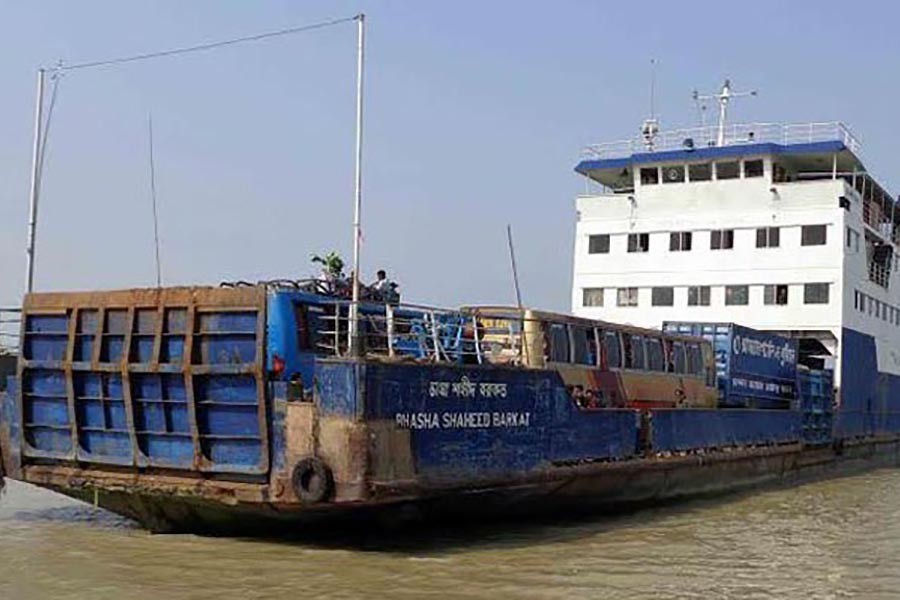Ferries at Paturia and Mawa are abuzz with passengers on their way to the capital city. The rush of people coming from south and south-western districts at the ferry ghats (wharves) on both sides of the Padma, as shown on a TV channel, is heavy. There is no question of maintaining the mandatory social distancing. Some people, including families, even feel no need for wearing protective masks. Their carefree attitude gives the false impression that things are back to normal. What a monumental folly it is!
Wonder of wonders, there is none to remind passengers at the ferry of the need for personal and social distancing. They themselves could not care less. The impression is that once they have decided to arrive at Dhaka, nothing could deter them. People are pushing, elbowing to get on board a ferry or disembark from it before others competing in the thick crowd.
If the rush of the Dhaka-bound passengers is heavy, it is no less so of the home-bound ones. The phenomenon is not puzzling either. This is half way of the holy month of Ramadan and those willing to celebrate Eid-ul-Fitr with their near and dear ones at their village homes, are sending members of their families well in advance. They want to avoid last moment's uncertainty and heavier rush. Will this happen this time also?
Now the question is, how do they manage to reach the ferry ghats? That is rather an intriguing question. The TV channel's reporter claims, trucks are the main transport. Then microbuses and motor cycles also are used often at much higher rate for the purpose. A number of these people even walk all the way. Is there a demonstration effect of some of the inter-state workers in India, who trekked on foot to get home? In that vast country, one has to walk more than a thousand mile and reports have it that quite a few could not make it; rather fell dead on the way. The other day a number of them, exhausted as they were fell asleep on railway tracks near Aurangabad only to be run over by a goods train. In Bangladesh the distance in most cases, however, is not longer than a hundred mile. For many covering such a distance is not difficult.
What prompts them to take such an arduous journey is quite understandable. Most of them fear losing their jobs. Owners of garments factories, contrary to their assurance of no retrenchment, have terminated workers. In the informal sector, the loss of jobs is likely to be the highest of all. Employees are anxious to save their employment and this explains their desperation. With the government's announcement of relaxation of lockdown and opening up of shopping malls and businesses on a limited scale, all those who left Dhaka now want to personally check the status of their jobs. Are they still in service or dispensable? In the United States of America, as many as 33.5 million people have applied for unemployment social benefit since mid-March.
In Bangladesh, the social security programme has been developed to feed the extremely poor and the most vulnerable. But there is no system like the USA where people without employment can claim social benefit. Although the government has issued cards for people not covered by the social security system that is in inexistence for long, it is not clear if people losing jobs in their droves in the informal sector will also be entitled to get the benefit. So there is the rush!
In their desperation, they are ignoring social and personal distancing exposing themselves to the danger of catching coronavirus. The universally accepted guidelines of staying at home and maintaining social and personal distance whenever out of home are grossly compromised by the way. But Bangladesh is yet to reach the peak of the virus infection, according to experts. This then is likely to be a recipe for triggering the pandemic to unleash its full force.


